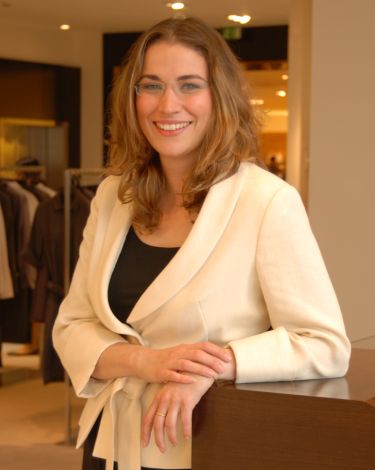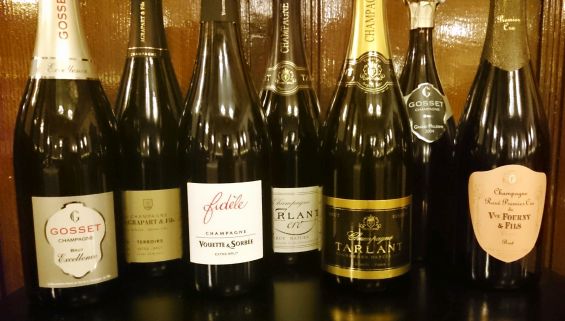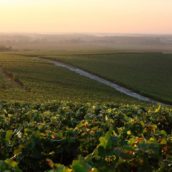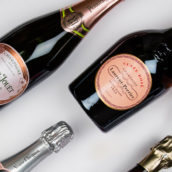The big Champagne houses are some of the best-known brands on the planet – the likes of Krug, Bollinger and Moët et Chandon. But there is another side – the world of growers’ Champagne.
People are surprised when they learn that most Champagne houses don’t grow the majority of their own grapes, but it’s true. The big names rely on the hard work of the small growers to supply them with the raw materials they need for their bottles of fizz. But there are plenty of growers out there who don’t sell their grapes on to the big houses – they make their own Champagne, which was the focus of the latest TWE tasting.
Our very own TWE buyer Dawn Davies MW (Master of Wine – one of the toughest exams on the planet to pass) led the tasting, and she began by serving two Champagnes blind to test our palates: one was from Gosset, which has a very modest production level compared to the other, which was from a large, well-known Champagne brand. The Gosset won comfortably, and demonstrated delicious notes of lemon, nuts and biscuits. Very classy.
We moved on to a grand-cru Champagne from Agrapart, the Terroirs Blanc de Blancs Extra Brut. This was reminiscent of a good Chablis, with clean aromas of minerals, flint and wet stone, along with notes of apricot, lemon and lime. Exceptional poise, and would be delicious served with shellfish.
The next Champagne was a challenge for some, myself included: Vouette et Sorbee Fidele Blanc de Noirs Extra Brut, made solely with red grapes (Pinot Noir and Pinot Meunier). Very different from the previous Champagne, this bottle was less fruity – almost savoury – but definitely more complex. It’s the sort of Champagne you really need to take your time over. In fact, when I went back to the glass 30 minutes later, the flavours had really opened up and changed since the Champagne was poured. A Champagne like this would work really well with meat dishes – perhaps roast duck with a fruit sauce. It was also Dawn’s favourite.
Two bottles from Tarlant next, picked to show the effect dosage has on Champagne. Dosage refers to the topping-up of Champagne bottles with sugar once the frozen plug of dead yeast cells has been removed (the yeast feeds on the sugar, and one of its by-products is carbon dioxide, which is how Champagne gets its fizz). The dosage determines the final sweetness level.
The first Tarlant we tried was the Zero Brut Nature, which has no dosage, and as expected, was elegant and refined with a clean, zingy freshness. The only difference between it and the second wine, the Brut Reserve, was the dosage, with the latter showing rich, toasty notes of brioche and ripe fruit – definitely my favourite of the two.
We then entered the noble world of vintage Champagne, with a return to Gosset and its Grand Millesime 2004. Vintage Champagne, as the name suggests, is made with grapes from a single year and is generally only made in the best years, when the weather conditions are ideal. The 2004 Gosset was very classy and stylish, with those bready, toasty notes again, and delicious fruity flavours of tarte Tatin and citrus.
We ended with our first rosé Champagne of the evening, from Veuve Fourny. Like many rosé Champagnes, red fruits were the key flavour, with clean and refreshing notes of red berries, strawberry shortcake and oatmeal, and a touch of cherry menthol on the nose. This would be superb sipped on a summer’s day, perhaps served with a fruity dessert.
Dawn imparted plenty of Champagne wisdom during the evening. Here are her best one-liners:

Dawn Davies MW, TWE buyer and Champagne expert
Dawn’s Champagne wisdom
‘Base wines for Champagne are enamel-stripping stuff’
‘Chardonnay is the elegant grape; Pinot Noir is the beast; Pinot Meunier brings youthful fruitiness’
‘Organic winemaking works, because you’re letting the soil breathe and letting things happen naturally – you are more in touch with your vines’
‘I’m not a big fan of the traditional Champagne flute. Put your Champagnes in a nice big glass and let the air get to them’
‘Vintage Champagne should only be made in the best years’
‘Fifteen to 20 years ago, rosé Champagne used to be cheaper than Non Vintage. But then all the bankers got a taste for Laurent-Perrier Rosé so they put the price up!’
A great evening, and thank you to Dawn for shedding light on some unfamiliar names in the Champagne world. They are available to buy on The Whisky Exchange website.
Tagged agrapart, Bollinger, Gosset, krug, Moët & Chandon, tarlant, Veuve Fourny, Vouette et Sorbee











 Enjoy responsibly
Enjoy responsibly
Comments
#Whisky Growers’ Champagne Tasting with Dawn Davies MW – small is beautiful: The big Champagne houses are some… https://t.co/WKhzPci8Ir
Growers’ Champagne Tasting with Dawn Davies MW – small is beautiful https://t.co/eT549mb158 via @whiskyexchange
Growers’ Champagne Tasting with Dawn Davies MW – small is beautiful https://t.co/ftfxuBhuvU https://t.co/xPfhiUrerI
RT @WhiskyExchange: On the blog, our very own Dawn Davies MW spreads the word on growers’ Champagne: https://t.co/hmr69ihlqk #twetasting
“Growers’ Champagne Tasting with Dawn Davies MW – small is beautiful” https://t.co/quZzKX5DQn #whiskey #feedly
RT @drinkers_app: “Growers’ Champagne Tasting with Dawn Davies MW – small is beautiful” https://t.co/quZzKX5DQn #whiskey #feedly